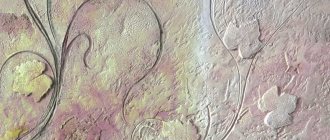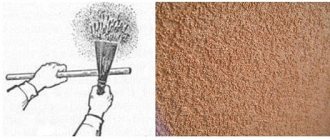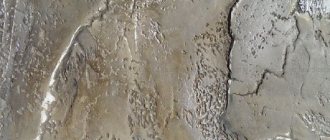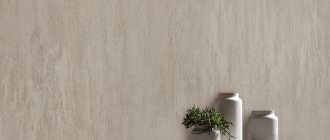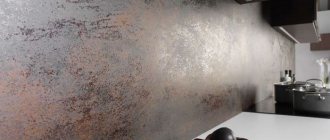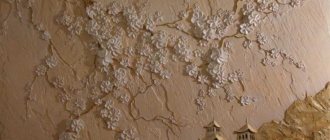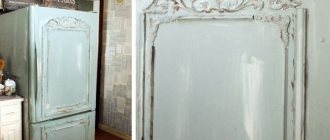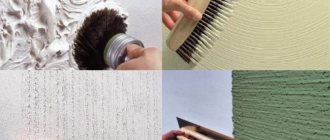Gone are the days when plaster was used exclusively for preparatory purposes when decorating walls in a house. Now this material is widely used for surface finishing. Thanks to its decorative properties, the interior can be given an original and unique look.
Decorative plaster is often confused with liquid wallpaper https://bioplast-russia.ru/. These materials are finishing materials, liquid wallpaper contains cellulose, a natural, harmless material. Decorative plaster contains cement and sand.
Purpose and benefits
Decorative plaster for interior decoration is a finishing coating for surfaces that can be applied with or without initial preparation of the base. This material is often offered in ready-made form, when the mixture is diluted in advance with a solvent or ordinary water under production conditions. After purchase, the mixture is used without modification.
But there are also dry mixtures that require adding liquid according to the instructions before adding them. To give the desired effect, various fillers are added to the plaster - pieces of shells or small pebbles.
This material has the following advantages:
- excellent soundproofing properties;
- resistance to moisture and temperature changes;
- smoothes out unevenness and other defects;
- ease of application and ease of use;
- variety of color palette.
Interior options and photo samples
The variety of materials and colors used in the manufacture of decorative plaster allows you to realize the most striking design ideas in projects. After all, this material can emit :
- marble;
- tree;
- stone and other types of coating.
And if a person has chosen a marbled texture, then the color scheme makes it possible to create a look for this stone that does not even exist in nature. At the same time, we must not forget that such a coating is much cheaper than real marble, stone or silk.
For example, we can mention projects such as a textured wall that emits sea breeze or sand. And marble or a cracked wall with an antique effect is well suited for an office.
There are walls that are real works of art , where entire paintings or bas-reliefs are scratched onto multi-layer plaster. The themes of these works can be arbitrary or copy famous masterpieces known all over the world - the Sistine Chapel, the Secret Assembly, and so on.
The walls can be painted not monotonously, but transitioning from dark to light tones and back, imitating shadows. A coating reminiscent of soft iridescent silk or velvet is well suited for bedrooms, boudoirs and living rooms.
Important
The strength and durability of textured plaster allows it to be used in rooms with high humidity or the likelihood of contamination. For example, in the kitchen or bathroom. Walls with this coating are easy to clean and are not afraid of moisture.
See photos of interiors with walls decorated with decorative plaster:
Types of material
In stores you can find different types of coatings depending on the composition. Their use has its own advantages and application features.
Decorative effect “Pearl” Plaster “Marakesh”
Studying the stunning and enchanting interior look created using the effect of Marakesh decorative plaster, called “Pearl,” you can’t help but get the feeling that such work is only possible for painting professionals with high experience.
However, this is just a misconception. In our office you can acquire decorating skills absolutely free. Short review
Required material and its consumption per m2
- Primer Acryl-Primer, 200g
- Decorative plaster Marakesh, 0.6-1kg/layer
- Varnish Matte, 50-100g.
- Valencia varnish, 50-150 g
Required tools and related products
- Trowel "Venice"
- Stainless steel spatula
- Sea sponge
- Decorative sponge
- Masking tape
Necessary base preparation
A smooth, durable surface prepared for painting, preferably reinforced with fiberglass.
Type of decorative surface
Textured (relief) decorative plaster
Drying time
24 hours
Obtaining the effect of decorative plaster is achieved using the following method:
- The surface is first impregnated with Acryl-Primer to remove dust and improve the adhesion of the material.
- After the soil has dried, Marakesh decorative plaster is applied using a trowel and spatula in an even thin layer and left to dry for 12 hours. After the prescribed time, apply the second layer of the “Pearl” decorative plaster effect using a sea sponge using the tamponing technique. After a few minutes, smooth the surface. When working on a large area, it is recommended to leave a “torn edge” to connect the fragments.
- After 24 hours, Matte and Valencia varnishes are applied, carefully soaking the decorative sponge. The sequence of matte and glossy varnishes is at your discretion.
The effect of Marakesh decorative plaster, called “Pearl,” has an impressive list of parameters inherent in modern finishing materials. In addition to the aesthetic beauty of semi-precious polished stone, you get moisture and water resistance, resistance to damage, environmental friendliness and durability for at least 15 years. The material is also repairable, which is a huge advantage over tiles, wallpaper and plastic.
The price of Pearl - the effect of Marakesh decorative plaster depends on the colors and shades of varnishes, their use in general, as well as the thickness of the layers and the severity of the relief, from 300 rubles per square meter.
Plaster Marakesh Sample 01
Plaster Marakesh Sample 02
Plaster Marakesh Sample 03
Plaster Marakesh Sample 04
Plaster Marakesh Sample 05
Plaster Marakesh Sample 06
Acrylic
It is based on acrylic resin, and the material itself can be applied to a wide variety of surface types. As a rule, it is sold in ready-made form. It is characterized by elasticity and durability. Having a low level of moisture absorption, this mixture is resistant to moisture, as well as to changes in the base. At the same time, there are disadvantages:
- rapid flammability;
- possibility of loss of appearance.
Advantages and disadvantages
Speaking about decorative plaster, one cannot fail to mention its main advantages and disadvantages. The advantages include:
- Designer uniqueness of the coating. Even if the wall copies an existing project or drawing, it will still be different from the original.
- Another advantage is the ability to use it for any type of walls and even ceilings. After all, there is no rule that it must be smooth and white. It can also be made textured and colored, silk or velvet. A person's imagination does not stop only at the walls.
- It is very important that mold or parasites will never grow in the thickness of the plaster, as, for example, in real wooden panels. And this is very important for human health.
- Decorative plaster, unlike natural materials, such as wood or silk, does not burn in principle. That is, the material is fire-resistant and therefore there are no restrictions for its use.
- Plaster can be washed with water or even household chemicals. What is important if the walls are finished in a children's room, kitchen or bathroom.
- There is another important advantage of decorative plaster - the ability to machine apply it to walls. There are mixtures that can be poured into special sprayers and applied to walls with a large area. Such plaster will not be distinguished by a highly artistic design, but it is well suited, for example, for the facade of a building. The color range of such a coating is very wide, its strength and durability are an order of magnitude superior to other types of coating, and even a simple plasterer can cope with such equipment. Moreover, the price for work with this method of application is significantly lower than manual work.
Disadvantages include:
- The complexity of applying the coating. And even then, only in cases where the plaster is multi-layered and represents a picture, a complex pattern or a certain texture. In this case, it is the master artist who must work, using special tools, often made by him in a single copy. As for the simple texture and monotonous color distribution, in this case an ordinary plasterer can handle it. The tool is the simplest and most accessible.
- Another disadvantage is the high price of decorative plaster. But again, this is only if it is a complex mixture, with an equally complex pattern or texture. And ordinary one-color mineral plaster is available in any store.
- And the last drawback is the rapid contamination of the surface, for example, dust or grease from cooking in the kitchen. This happens due to the texture of the coating, the abundance of irregularities and depressions in the plaster. But as already mentioned, it is easy to clean and dirt and grease do not linger on the walls under the influence of detergents.
Decorative plaster is not a new word in the design of premises and buildings; it was used many centuries ago. But in the modern world it has become more accessible and diverse than its ancient counterparts. With the proper skill and talent, you can not only make copies of ancient frescoes and paintings on the walls, but in many ways surpass them.
We must also not forget that in the old days materials of less varied quality were used. Thus, modern coatings can last much longer than before. The main thing is to observe technology and proportions.
Mineral
The cement powder mixture requires dilution with water. It is easy to apply to the surface. The material is durable, moisture resistant, has good vapor permeability and has thermal insulation properties.
Factors limiting use will be:
- the need for updating once every ten years;
- weak elasticity;
- the need for subsequent staining.
Decorative effect “World Map” Plaster “Traverto Noa”
The world map is one of the most popular decorative plaster effects due to its relief and variety of shades and colors.
It can be tinted or covered with glazing and tinting compounds. Thanks to the lime base, it has a beneficial effect on the microclimate. It can withstand contact with water and frost, but is not a façade material. Short review
Required material and its consumption per m2
- Primer Acryl-Primer Quartz, 250g
- Decorative plaster Traverto Noa, 1.4-2kg/layer
- Varnish Matte, 50-100g
Required tools and related products
- Trowel "Venice"
- Stainless steel spatula
- Decorative sponge
- Masking tape
Necessary base preparation
Leveled, durable surface, prepared for painting, reinforced with fiberglass.
Type of decorative surface
Textured (relief) decorative plaster
Drying time
24 hours
Recreating the effect:
- Treat the surface to be decorated with a quartz primer, white or tinted to match the coating. This will improve the adhesive characteristics (stickiness of the material), and also normalize the consumption and water absorption capacity of the base.
- Using a trowel, apply an even layer of Traverto decorative plaster over the entire surface. It should become uniformly rough, resembling a surface plastered with cement mortar. Leave to dry for at least a day.
- Using a Venetian trowel and spatula, bring to life the effect of decorative plaster, creating islands on the surface that resemble the silhouettes of islands and continents on a world map. After a few minutes, smooth the islands until smooth. The work must be carried out from corner to corner, without interruption.
- After 24 hours, matte varnishes are applied in the combination of colors that you initially chose to create the effect of decorative plaster. It is also possible to use wax to make the surface waterproof.
The amazing result of your work will be reflected on the walls with incredible elegance. Also, many modern effects are created from Traverto, such as “antique wall” or “art concrete”. It is possible to use travertine to imitate brickwork or a natural concrete surface.
The price of the “world map” effect depends on the thickness of the applied layer and the use of varnishes, starting from 500 rubles/m2.
Plaster Traverto Noa Sample 01
Plaster Traverto Noa Sample 02
Plaster Traverto Noa Sample 03
Plaster Traverto Noa Sample 04
Plaster Traverto Noa Sample 05
Plaster Traverto Noa Sample 06
Silicate
It is most often used as facade decorative plaster, since it contains potassium glass, which is harmful to humans. It is advisable to apply it to a mineral mixture or directly to concrete. The benefits include:
- strength and high elasticity;
- high drying speed;
- Possibility of cleaning with water;
- excellent vapor permeability;
- antibacterial effect;
- durability.
However, this is an expensive and dangerous material for humans, requiring certain skills in working with it.
Composition of plaster and decorative inclusions in it
Despite the diversity, all types of decorative plaster are produced in two variations:
- As dry mixtures, in paper bags.
- As ready-made compositions in PVC buckets.
Plastered living room Source myshtukaturka.ru
Stylish, hand-plastered hall Source decorationinfo.ru
Silicone
Modern material made from silicone-type resins is sold ready-made in a wide color palette.
Main advantages:
- elasticity and high degree of adhesion;
- moisture resistance and the ability to quickly remove dust;
- ease of finishing of any type of base indoors and outdoors;
- durability.
At the same time, the material is not cheap, and before application the surface must be treated with a silicone primer.
Classification of finishing material by base
The following types of materials are used for the manufacture of plaster:
Cement
This finishing material is more suitable for finishing work on the outside of the house, although it can also be used for rough interior finishing of walls. This type of plaster tolerates high humidity very well. Its negative aspects include a long “setting” period (about a month). After interior finishing of the walls with such material, for further work, they will need to be treated with finishing plaster.
Plaster
Plaster of this type is sold in stores mainly in the form of dry mixtures, although it is also found in ready-made paste. As the name suggests, the basis for this finishing material was gypsum, although it was not without plasticizers and retarders. This material is used for finishing bedrooms, living rooms, and corridors. You should not use gypsum plaster to decorate a bathroom or kitchen. This is due to the fact that in rooms with high humidity the material will begin to swell and collapse.
Polymer based plaster
For the manufacture of this material, synthetic substances and artificial resins were used. In finishing work, polymer plaster is not used for rough work, but acts as a finishing material.
Stylish interior with Venetian plaster
Textured
This is a material with a very viscous structure. The composition includes various fillers, such as mica, wood, granite or marble chips. Can be used for both internal and external work. Concrete, brick and even wooden bases are subject to finishing.
Advantages:
- formation of a durable waterproof but breathable coating;
- the ability to imitate other materials, such as leather, stone or wood;
- selection of decorative plaster color by tinting;
- excellent heat and sound insulation properties;
- ease of application and affordable price.
To create the desired pattern, you need to prepare a roller with a spatula and arm yourself with a stencil.
Classification of plaster by purpose
Plaster mixtures for interior finishing work also differ in scope:
Basic plaster
This type, in turn, is divided into the following: simple, improved, high-quality. A simple plaster mixture is intended for finishing industrial and other non-residential premises. Improved plaster can be used for work inside living rooms and public spaces. High-quality plaster mixtures are used for the decoration of theaters, museums, and upscale hotels. Although, recently, a decorative mixture for plaster has been used for the same work.
Artistic plaster mixtures
This type of finishing materials made its debut on the finishing materials market relatively recently, but has already gained some popularity. The difference between the decorative mixture is its wide scope of application. The wall surface treated with such a finishing material itself has an attractive appearance and a certain degree of protection. Some of these mixtures rival the beauty and style of stone-clad spaces.
Plaster with three-dimensional painting in Italian style
Structural
A ready-made material with a base of acrylic or silicate resins is offered for sale. Marble and quartz chips are used as filler, resulting in a grainy structure.
This is a universal, mechanically resistant coating. Applying decorative plaster with your own hands is quite simple; as a result, an original relief is formed.
The resulting layer is characterized by high parameters of breathability and moisture resistance. At the same time, temperature fluctuations do not have a significant impact on quality.
To apply the material you need:
- clean the area;
- dry the wall;
- if necessary, level the surface;
- prime the wall and apply plaster.
Kinds
Decorative plaster is a universal means for performing interior finishing work. The wealth of styles, textures and shades allows you to turn your wildest design fantasies into reality. Great demand has led to the emergence of several varieties, each of which has its own amazing characteristics and appearance.
Art concrete
Decorative art concrete is made from cement and gypsum powder with the addition of additives in the form of dyes and fillers. This composition ensures practicality, high performance and aesthetic performance.
Decorative plaster “Art concrete” Source decorazza.
It comes with a soft texture, allowing the reproduction of exquisite textured imitations of smooth concrete, panels, and rivets. The other type is on a durable base, made from a lacquer base that gives elegance and aesthetics. In terms of performance, it is considered an ideal solution for finishing rooms with high humidity. It is used for cladding furniture and creating designer decors.
Another classification occurs according to the type of connecting element. Decorative plaster art-concrete is found:
- Acrylic.
- Mineral.
- Silicate.
- Silicone.
"Lamb"
This type of decorative plaster belongs to the category of textured facing materials. Fits perfectly on uneven surfaces, creating the effect of smooth walls. With the help of the “lamb”, a granular structure is formed. Resembling the wool of a shorn lamb, hence the name of the technique.
A variety of decorative plaster “Lamb” Source fasad-exp.ru
The component that organizes this original effect is quartz or marble chips with a diameter of 1-4 mm. The size of the fractions affects the “texture” of the walls being treated. The smaller the size, the less grainy the result will be.
Classified based on its constituent components. May be:
- Mineral.
- Acrylic.
- Silicate.
- Silicone.
Important! The main advantage of the technique is maximum environmental safety for humans.
See also: Catalog of companies that specialize in finishing materials.
"Fur coat"
The material received its original name due to its external similarity to sheepskin, which is used for sewing clothes. The principle of application is simple: the cement-sand mixture is mixed with fine crushed stone (1-2 mm) and applied to the wall surface. A rough surface is formed. The amount of texture deviation depends on the size of the pebbles. The larger they are, the more prominent the pattern will be, and vice versa.
A separate type of plaster “Shuba” Source zen.yandex.ru
Available in two colors: white and grey. It can be painted after processing and drying or by adding dye at the stage of mixing the solution. The composition is divided into 3 groups:
- Mineral.
- Acrylic.
- Silicone.
Healthy! Of all materials of a similar nature, decorative plaster “fur coat” is the most economical.
Decorative mosaic plaster
This implies a composition of crushed natural stone with astringent components. Crumbs of granite, quartz or more environmentally friendly marble are used as filler. In some cases, malachite or lapis lazuli are added to give a reddish tint. Taking into account the high cost of these minerals, the price of such compositions becomes even higher. Therefore, in most cases, colored quartz particles are used. They are suitable for interior cladding, but outside they will peel off after a few cold seasons.
The most expensive type of decorative plaster, mosaic Source dizajnadvice.ru
Classified by the type of stone added (marble, lapis lazuli, quartz, etc.) or the type of connecting element:
- Acrylic
- Mineral
- Silicone.
Decorative plaster in the bathroom Source www.dizainvfoto.ru
For interior work, fine-grained and fine-textured compounds are used. Mixtures with a fraction size of more than 3 mm. most often used for exterior decoration.
Venetian
To get a beautiful coating, you need to purchase a transparent ready-made mixture and add one or more colors to it. To give the surface the necessary effects, the material is applied in layers, and protective wax or varnish is placed on top.
This plaster contains marble particles and lime. If necessary, you can get a marble or glossy surface. The applied composition dries quickly with the possibility of forming a mosaic-type relief. Among the qualities of such a durable coating are environmental friendliness, fire safety, resistance to wear and moisture.
Work on applying decorative plaster requires certain skills. The quality of the final result depends on a number of factors. Follow the step-by-step technology and the end result will definitely not disappoint you.
When applying, the following sequence of actions must be observed:
- Clean and level the walls;
- Select areas up to 1 m in size, and after drying, apply the first layer;
- For the first coating, continuous application technology is used, and all subsequent layers are applied in strokes. Movements should be small. By adjusting the degree of pressure, you can change the texture of the coating;
- Smooth the coating over the area. Repeat steps over the entire surface;
- Allow the plaster to dry;
- Polish and apply wax or varnish to protect. As a result, you can get a coating like the one in the photo of decorative plaster.
Using modern methods of finishing walls and facades, you can create a beautiful interior, distinguished by originality and comfort. Decorative plaster helps solve this problem in the most effective and visually attractive way.
Classification by texture
Decorative plasters are classified by texture . This is usually visible on the wall by the visual and tactile effect created on it.
Structural
The structure of the plaster is given by various fibers or pebbles of different fractions. These additives make the surface rough, and the level of roughness depends on the size and shape of the fillers. There are such types of structural plaster as “lamb” or “fur coat”.
In the first case, the surface of the wall is covered with small pimples, making it look like astrakhan fur, and in the second it is fleecy, like a fur coat. Large fractions in the composition of the plaster give the wall the appearance of rock: basalt, granite, etc.
Advice
You can enhance the structural effect of the coating using special rollers or spatulas, creating deeper and more complex patterns.
Structural plaster can be processed with sanding machines, which gives it a natural, natural look.
Latex plastic
This type of coating imitates marble or granite . It is glossy, but retains the natural texture and pattern of these stones. This effect is achieved not only by the composition of the plaster, but also by tinting. To do this, the master must be of a very high level of training. You can make the wall look as if it were covered with serpentinite or another type of marble.
Venetian
Venetian plaster is a more complex type of coating.
- Firstly, it contains real marble, or rather its small elements. Polymers, plasticizers and colored fillers are also added there.
- Secondly, this type of plaster is applied in 3-4, or even 10 layers. This gives it the appearance of a finished, homogeneous marble coating.
- Thirdly, to enhance the effect, the last layer on the wall will be special wax.
All this makes the application of this type of plaster labor-intensive and therefore expensive. Only a professional painter-plasterer with extensive experience will be able to apply this type of plaster correctly.
Sea breeze
Sand and mother of pearl in the form of fine powder are added to this type of plaster . The coating becomes rough with color tints depending on the angle of the incident light. The additional effect of sea wave and foam is achieved with special tools:
- rollers;
- spatulas;
- and sometimes just sponges, brushes and even combs.
Grinder
This type of plaster looks like granite, marble or ordinary concrete, processed with a grinding machine that left disc marks on the surface. That is, a type of unfinished wall treatment.
Attention
This style sometimes resonates with designers; for example, some people like the look of an unplastered wall in a living room.
This texture on the wall, reminiscent of processing with a sanding disc, is created by circular movements with a spatula or brush.
Sgraffito
Complex textured plaster, consisting of several layers that differ in color . After the plaster dries, which occurs after 5-7 hours, various designs are cut out on the top layer, so that a layer of a different color is exposed.
The designs can be scratched and look like stars or plant branches, or they can be more complex, such as fragments of paintings or frescoes. It is clear that such a design can be made not just by a plasterer, but by a real artist, and accordingly the price of such a coating is extremely high.
Bark beetle
The bark beetle resembles sawn and sanded boards, eaten away by bark beetle larvae. You can make such a wall from any type of decorative plaster, the main thing is that it contains small stones. Also, to enhance the effect of antiquity, an appropriate dye is added to the mixture. The wall should have the color of wood.
Craquelure
This type of plaster looks like an aged, heavily cracked wall surface . It is suitable for walls made of any material, be it concrete, brick or plasterboard.
This effect is achieved by painting the base under the plaster with white paint, and drying the material itself with a hairdryer after application. Moreover, unevenly, and in some places this causes cracks in the plaster layer.
Advice
Deeper cracks are made with special tools so that the white paint appears brighter in the cuts, enhancing the visual effect.
Wet silk
This plaster contains pearlescent powder. The smallest particles of this dust give the wall an iridescent texture, reminiscent of silk fabric. This type of plaster is usually done in living rooms and bedrooms because of its color and cost .
Marseille wax
Marseille wax plaster visually repeats the pattern of wood, stone, sandstone, while it is absolutely smooth. This effect is achieved by applying it in several layers and then processing it with special tools.
Attention
The work of a master plasterer in this case is compatible with creativity; he must be a bit of an artist in order to convey the play of light and the texture of the chosen material.
Naturally, such a coating is very expensive and is used for the interior of the house.
Photo of decorative plaster
| European-quality renovation from A to Z If you know how to hold a hammer, spatula, screwdriver in your hands, then you have every chance to earn from 80,000 rubles/month in the conditions of the global crisis! Read more >> |
TOP 5 effects of decorative plaster for interior decoration
When decorating the interior, any person wants to choose the best effect of decorative plaster. However, there is no one best effect, because everyone's tastes are different. We have selected for you the TOP 5 best effects of decorative plaster used in interior decoration.
01Venetian plaster Classic - “Polished marble”
02Swahili paint – “Sandy wind”
03Plaster Marakesh - “Pearl”
04Plaster Traverto Noa – “Map of the World”
05Alba putty – “Sea foam”
Below is a description of each of the effects of decorative plaster.
Decorative effect “Sea foam” Putty “Alba”
The elegance of palace and castle styles, which since ancient times was created with expensive silk fabrics, can now be achieved using Alba putty-paint.
The effect of decorative plaster, called “Sea Foam,” combines a truly elegant and charming variety that is sure to impress anyone, even the most capricious and picky taste. Short review
Required material and its consumption per m2
- Primer paint “Uno-Decor”, 160g
- Decorative acrylic putty “Alba”, 300g
Required tools and related products
- Microfiber roller
- Trowel "Venice"
- Stainless steel spatula
- Round iron
- Masking tape
Necessary base preparation
Maximum leveled surface, prepared for painting, reinforced with fiberglass.
Type of decorative surface
Decorative paint
Drying time
24 hours
Decoration should be carried out strictly according to the instructions:
- Using a fiber roller, apply an even coat of base color, Uno-Decor paint, tinted to match the finish.
- After 8-12 hours, a layer of Alba decorative paint is applied with a Venetian trowel using chaotic strokes. After 3-4 square meters, you should return to the beginning and create the effect of “Sea Foam” decorative plaster using a round trowel. Docking between areas should be done using the dry to wet technology. The edges of each layer should be ragged.
- A day after the first layer of Alba has dried, apply the next one, following the principle of the first, but changing the direction and overall pattern. Due to such changes, you get intricate overlaps of each wave, which creates the effect of sea foam. After partial drying, smoothing with a trowel for decorative work “Venice” is allowed.
- The use of protective varnish is allowed 24 hours after Alba putty has dried, but is not mandatory.
Chic sea shimmers and unobtrusive patterns will fit perfectly into any interior style, be it classic, loft or high-tech. Decoration technology does not require professionalism. All you need to do is attend our master class on applying the decorative plastering effects you require.
The price of Alba acrylic putty and the graceful effect of sea foam starts from 600 rubles per square meter.
Alba putty Sample 01
Alba putty Sample 02
Alba putty Sample 03
Alba putty Sample 04
Alba putty Sample 05
Alba putty Sample 06
Shop "Plaster" and
Luxurious interiors and monumental building facades, characterized by enormous durability, resistance to various destructive factors, as well as being environmentally friendly and safe, are the merit of the manufacturer of the premium segment of decorative materials Mascarade, as well as the competent work of the specialists of the online service “Plaster”. You can buy any of the decoration products by calling our numbers, filling out an online application on the website or visiting the sales office and show room. We always have a huge range of decorative coatings, professional tools, as well as tinting of any volume in the shortest possible time (no more than 3 minutes/5 kg bucket).
